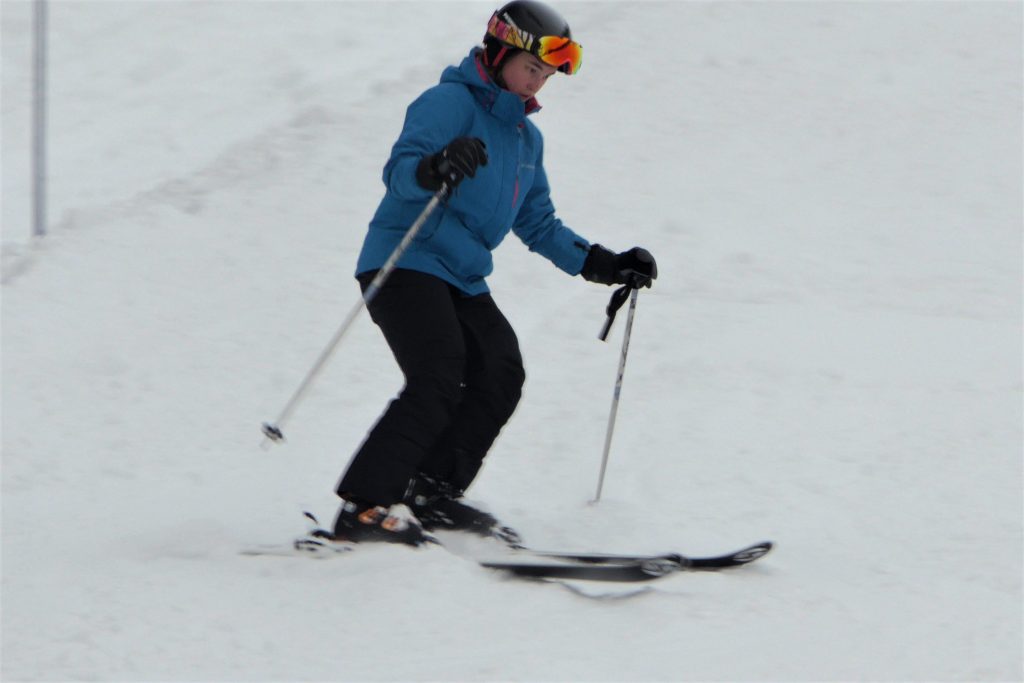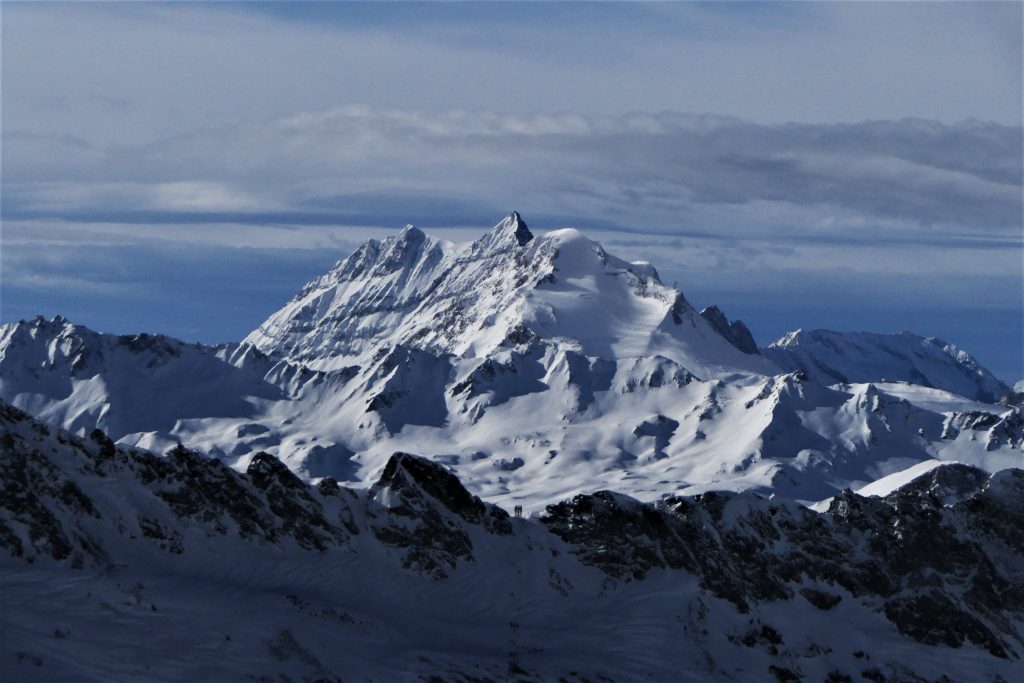Today we had perfectly groomed, empty black pistes – so it was a “no brainer” to go and ski them. Connie was confident everywhere despite the steepness. It’s always a good idea to get out early and take advantage of such conditions – they don’t last for long!
The next target was to get up on the glacier and make use of the good weather and wide open slopes for carving. Prior to that we targeted some pivoting and particularly the use of the pole plant to support the body during tight, braking turns. It still wasn’t completely clear that pole planting is done through the movement of the whole body – not the arm – and when used in braking turns the pole takes a lot of weight. Dynamic skiing however does not use a pole plant – only a touch for feedback. When carving tight dynamic turns the “touch” may even be the hand dragging on the ground – or “knuckle dragging” as we sometimes say.
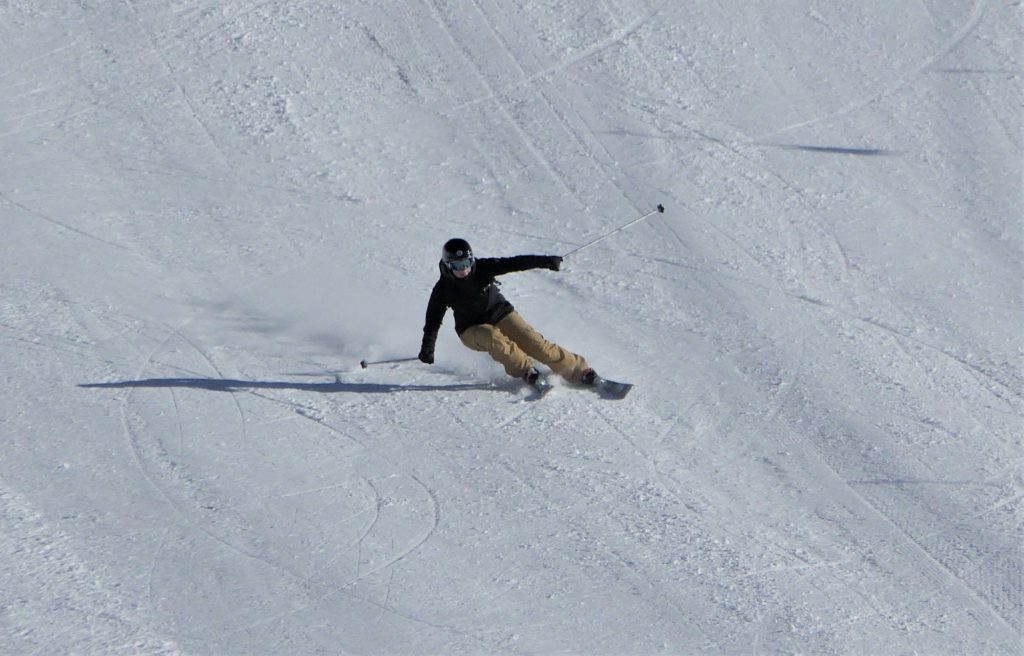
Eve looks strong in carving due to great use of the active counter rotation of the pelvis and hence strong angulation – on top of many other aspects she is working on. The above image shows stronger angulation and the image below shows stronger inclination – both correct.
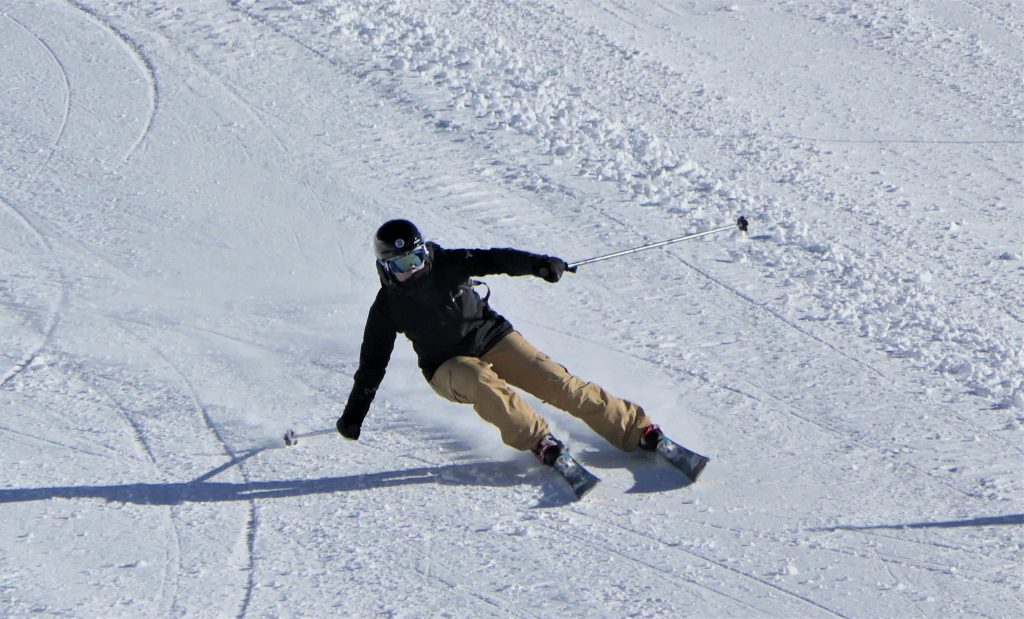
Connie was skiing strongly but was struggling to actually carve the skis – this turning out to be due to shoulder rotation and lack of a clear or full understanding of the counter rotated pelvic movement – hence lack of angulation. Although there was already a quantum improvement in Connie’s skiing and security the pelvis/hip issue was limiting further progress so we had to tackle it head on. This process began indoors with a classic “ski dancing” routine which has probably gone viral already on social media. Other issues such as not being able to properly extend the outside leg appear to be associated with the lack of angulation and associated hip positioning. Indoors we also looked at how the transition between turns relates to a skating action and there is not a “rotating” of the body involved ( at least in shorter to medium turns). The Double Skating nature of teh early pressure on the inside ski (uphill) was also explained.
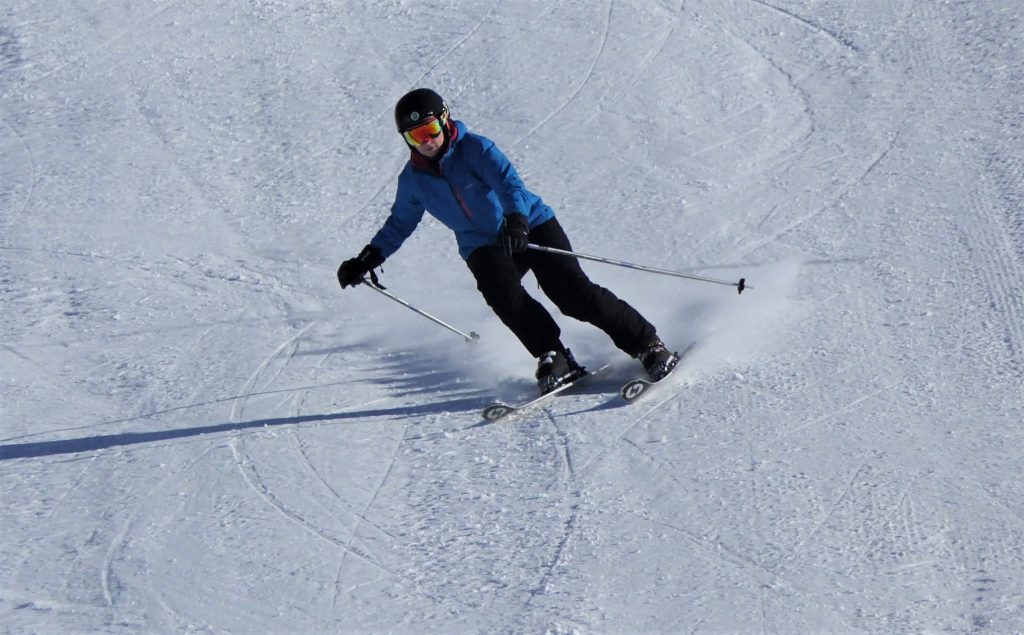
Working slowly on short turns Connie demonstrates that her bottom really does have a mind of its own – which is how she fairly accurately described the sensation – and which fortunately remains invisible to the untrained eye! Effectively the spine is slightly twisted from the bottom up (instead of from the top down) – reversing the usual direction of the twist and facilitating angulation while protecting the spine through enabling reflexes.
